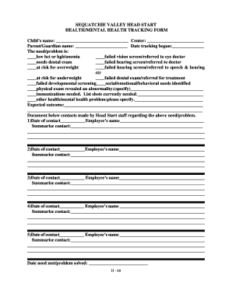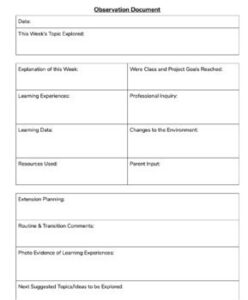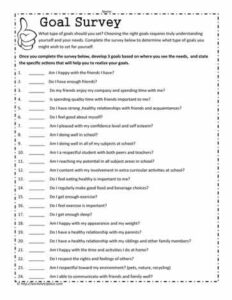As children journey through their educational years, the fourth grade often marks a pivotal point in their reading development. It’s a time when many transition from “learning to read” to “reading to learn,” and their attitude towards reading can significantly shape their future academic success and lifelong love for books. Understanding how a child feels about reading isn’t just a nice-to-have; it’s a fundamental insight that can unlock new teaching strategies, identify potential roadblocks, and foster a more positive learning environment.
That’s where a well-designed reading attitude survey comes into play. It provides a structured, non-intimidating way for educators and parents to peek into a child’s internal world regarding reading. By gathering this crucial feedback, you can tailor interventions, select more engaging materials, and ultimately help nurture a generation of eager, confident readers. This article will explore the importance of such a tool and guide you through creating or utilizing an effective grade level 4 elementary reading attitude survey template.
Why Understanding Reading Attitudes at Grade 4 is So Important
Fourth grade is often where reading habits solidify, for better or worse. Students are expected to tackle increasingly complex texts across various subjects, and if their underlying attitude towards reading is negative, it can create a ripple effect on their comprehension, vocabulary acquisition, and overall academic performance. Imagine a child who dreads opening a textbook; they’re already at a disadvantage before they even begin reading. Conversely, a child who approaches reading with curiosity and enjoyment is likely to engage more deeply, persist through challenges, and retain information more effectively.
An early understanding of these attitudes allows educators to be proactive rather than reactive. Instead of waiting for a decline in grades or observable disengagement, a survey can flag potential issues when they’re still easily addressable. Perhaps a child feels overwhelmed by the sheer volume of reading, or they haven’t yet found genres that truly capture their interest. These aren’t necessarily indicators of a lack of ability, but rather a need for tailored support or different approaches.
For teachers, this feedback is invaluable for differentiating instruction. Knowing that a significant portion of your class struggles with motivation for independent reading, for example, might prompt you to incorporate more group reading activities, silent sustained reading (SSR) time with student choice, or even invite guest readers. For parents, understanding their child’s reading attitude can help them choose appropriate books for home, create a more supportive reading environment, or initiate conversations with teachers about specific concerns. It really bridges the gap between what we observe and what a child truly feels.
Ultimately, the goal isn’t just to measure attitude, but to use that measurement as a springboard for positive change. A comprehensive grade level 4 elementary reading attitude survey template isn’t just a checklist; it’s a diagnostic tool that empowers everyone involved in a child’s education to foster a lifelong love of reading. It helps us see beyond performance and understand the emotional and psychological connection a child has with books.
Key Areas a Grade 4 Reading Attitude Survey Should Cover
To get a holistic picture, a survey should touch upon various facets of a child’s reading experience. Think about where and how they encounter reading, and their feelings in those contexts.
- **Reading for Enjoyment:** Do they read for fun? What kinds of books do they like? How often do they read outside of school?
- **Reading for Information/Learning:** How do they feel about reading textbooks, articles, or informational passages? Do they see reading as a useful tool for learning new things?
- **Perceived Reading Competence:** Do they feel they are good readers? Do they understand what they read? This taps into their self-efficacy.
- **Reading Challenges and Frustrations:** What makes reading difficult or boring for them? Are there specific types of texts or tasks they avoid?
- **Reading Habits and Environment:** Where do they read? Who do they read with? Do they have access to a variety of books at home and school?
Crafting Your Effective Grade Level 4 Elementary Reading Attitude Survey Template
When you’re putting together a survey for fourth graders, simplicity and clarity are your best friends. Remember, these are children, and overly complex language or abstract questions will only lead to confusion and inaccurate responses. The best surveys use direct language, focus on observable behaviors or clear feelings, and often employ visual aids or a straightforward scale to make responses easy. Think about using a Likert scale (e.g., “Always,” “Often,” “Sometimes,” “Rarely,” “Never”) or emojis to represent feelings, as these can be more accessible than open-ended questions for this age group, though a few open-ended questions can be insightful too.
Consider the length of your survey. Fourth graders have a limited attention span, so a survey that’s too long might lead to rushed or disengaged answers. Aim for a manageable number of questions, perhaps 15-20, that really target the core areas you want to understand. You might even break it down into shorter sections if you plan to administer it over multiple days, though a single sitting is usually preferable to capture their immediate thoughts.
When formulating questions, avoid leading statements. Instead of asking, “Don’t you just love reading adventure books?” which implies an expected answer, try something like, “How do you feel about reading adventure books?” or “What kind of books do you like to read most?” The goal is to elicit honest, personal opinions, not to guide them towards a “right” answer. Anonymity is also key; ensuring students feel their responses won’t be judged will encourage more truthful feedback. This can be as simple as not requiring names on the survey itself.
The beauty of a good grade level 4 elementary reading attitude survey template is its versatility. You can use it at the beginning of the school year to gauge baseline attitudes, midway through to check for progress or changes, or at the end to reflect on the year’s reading journey. It’s not just about identifying problems; it’s also about celebrating successes and reinforcing positive reading experiences. The insights you gain from this simple tool can profoundly influence how you support young readers.
- **Keep it concise:** Aim for 15-20 questions.
- **Use clear language:** Avoid jargon or complex sentence structures.
- **Incorporate scales or visuals:** Likert scales, happy/sad faces, or simple checkboxes work well.
- **Offer choice:** Include questions about preferred genres or types of reading.
- **Ensure anonymity:** Make students comfortable sharing their true feelings.
- **Consider administering it individually or in small groups** if you have students who struggle with independent work or reading the questions themselves.
By regularly checking in on students’ feelings about reading, educators and parents can develop a more nuanced understanding of their needs. This deeper insight allows for the implementation of targeted interventions, the introduction of more appealing reading materials, and the creation of environments that truly foster a love of literacy. It’s about building a foundation where every child feels capable and eager to explore the vast world of books.
Ultimately, nurturing a positive reading attitude in fourth graders is an investment in their entire academic future. When children genuinely enjoy reading, they become self-motivated learners, expanding their knowledge across all subjects and developing critical thinking skills that serve them for a lifetime. This simple survey can be a powerful first step in ensuring that every child’s reading journey is filled with excitement and discovery.



